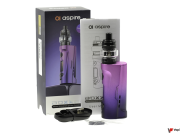“Disappointingly, however, Ministry officials struggle to apply a holistic wraparound approach to reaching the smokefree goal. They cannot seem to get over the fact that ‘vaping products are not approved stop-smoking medications’,” she said.
Loucas added that sadly the Ministry of Health continues to push the use of cessation tools such as nicotine patches, gum, and lozenges, despite all the scientific studies indicating that e-cigarettes are more effective than all these NRTs.
“Predictably, these latest government guidelines for our healthcare professionals place the focus on nicotine replacement therapy (NRT) prescription. That would be fine if NRT was just as effective as vaping in getting Kiwis off cigarettes, but it’s nowhere near as successful,” she says.
E-cigs the most effective cessation tools of all NRTs
In fact, a 2019 study conducted locally by researchers at the University of Auckland, found that of all NRTs, nicotine-containing vaping products are the most effective at helping smokers quit cigarettes successfully. Associate Professor Dr. Natalie Walker and Professor Chris Bullen from the University of Auckland, collected results from 1124 participants on a smoking cessation programme.
The participants were considered successful if they managed to remain “smoke free” for six months. In line with previous studies, the researchers found that people who used patches in conjunction with a nicotine containing e-cigarette, were more likely to remain smoke free for the trial period, than those who used patches combined with a nicotine-free e-cigarette.
To this effect Dr. Walker had concluded that e-cigarettes are ideal harm-reduction tools for smokers. “Vaping is less harmful than smoking. In NZ, 5000 people die each from smoking-related diseases. The best of our knowledge no one in NZ has died from vaping.”
Similarly, a randomised trial carried out by a team from London’s Queen Mary University and supported by the National Institute for Health Research, Health Technology Assessment Programme and Cancer Research UK, followed nearly 900 smokers through their quit attempt.
A total of 886 participants were randomly divided into two groups. Members of one group were given a conventional Nicotine Replacement Therapy of their choice (including combinations of products if they wanted it) while the other group were given a second-generation e-cigarette, a bottle of 18mg/ml liquid and advice on buying more juice. Both groups were also offered behavioural support.
The e-cigarette group were almost twice as successful, with an abstinence rate of 18%
After one year the participants were assessed for smoking status, including biochemical tests to ensure that those who claimed to have quit smoking really had. The NRT group had a 9.9% abstinence rate at one year – surprisingly high, as previous studies have found NRT to be only 5-7% effective. However, the e-cigarette group were almost twice as successful, with an abstinence rate of 18%.













